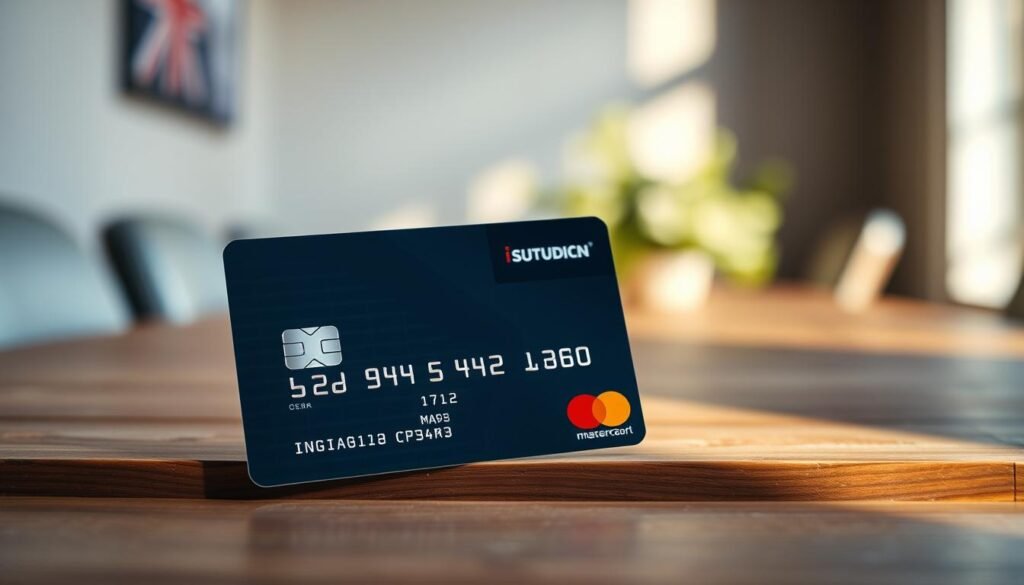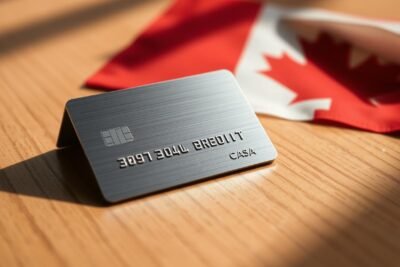
International student credit cards UK banks: Compare & Apply Now

Start smart at university: you arrive with a suitcase, a smile, and questions about how to get a card and build a credit score fast.
On my first campus visit, I watched a friend set up a card in minutes by bringing their phone into a branch. The teller scanned the app, verified ID, and the account was live before lunch. That small moment made applying feel simple and reachable.
You’ll compare tailored and regular offerings, learn eligibility rules like age and income, and see why some lenders ask you to hold their bank account first. We show when to apply in-app, online, or face-to-face so you can move quickly and protect your score.
Make sure you know which documents to bring and how parental support or part-time income counts. To explore matched savings and account help alongside card options, check this guide on the best student savings choices at your bank: student savings account options.
- Start here: How student credit cards work in the UK today
- international student credit cards UK banks what to compare before you apply
- Eligibility made clear: age, residency, income, and student status
- Know the real cost: rates, fees, and terms conditions to review
- Features that matter: building credit, payments, and security
- How to apply with UK banks: in app, online, in branch, or by phone
- If you’re not eligible: credit builder cards and credit-building tools
- Your next steps to compare top options and apply with confidence
Start here: How student credit cards work in the UK today
You’ll apply with proof of enrolment and a student number, and issuers will verify your ID before approval. A student credit card functions like a regular credit card but is tailored so costs stay low while you learn to borrow responsibly.
Limits are usually smaller and many products have no annual fee. If you pay your statement in full and on time, you often get an interest-free period on purchases commonly about 55 days.
Miss a payment and the purchase rate or interest rate will apply, so make sure you know your billing dates. Approval depends on your status, income and any existing credit history; representative APRs are not guaranteed for everyone.

"Keep balances low and pay on time to build a strong profile."
- Check eligibility before you apply to avoid unnecessary credit searches.
- Understand fees for cash withdrawals interest often starts immediately.
- Compare benefits like purchase protection and digital wallet support to manage your spending.
Want cashback or extra perks? See related cashback options while you compare products and terms.
international student credit cards UK banks what to compare before you apply
Compare the numbers first. Start with the headline figures so you know how a card will affect your money month to month.

Representative APR vs purchase rate: what those numbers mean for you
The representative APR shows the yearly cost that most successful applicants see — a common example is 21.9% APR (variable). The purchase rate (for example 21.95% p.a.) is the ongoing interest charged on new purchases if you carry a balance.
Credit limit expectations and how they’re set for students
Lenders usually set lower starting limits for learners. Typical limits may be around £500 and depend on your income, outgoings, and credit profile.
Interest-free days when you pay in full vs carrying a balance
You can get up to 56 interest-free days on purchases if you pay statements in full and on time. If you revolve a balance, interest starts accruing on new spending.
Bank-specific eligibility ties, like needing a student current account
Some providers require you to hold their student current account first. Check those conditions before you apply so you don’t delay getting a card or fail to meet lender rules.
Eligibility made clear: age, residency, income, and student status
Before you apply, confirm age and residency rules so you don’t waste time on an ineligible form.
Minimums matter: you must be at least 18 and most offers ask for UK residency. Lenders will ask for proof of enrollment at your university or college.
Minimum age and residency requirements
Bring ID, proof of address, and your enrollment letter. Some providers also expect you to have held a bank account with them for a short period before applying.
What counts as income (and why loans don’t)
Regular wages or steady parental support usually count as income. Student loans normally don’t qualify because they are loaned funds, not earnings.
International applicants: time, enrollment, and checks
If you are an international applicant, many lenders require you to stay in the UK for 12+ months and show regular income. Approval and the rate you receive depend on your reported income, any early signs in your credit history, and your overall status.

| Requirement | Typical proof | Why it matters |
|---|---|---|
| Age | Photo ID (18+) | Legal ability to enter contract |
| Residency | Address or visa | Confirms local risk and address |
| Income | Payslips or support letter | Shows ability to repay |
| Enrollment | Student number or letter | Verifies status for tailored offers |
Know the real cost: rates, fees, and terms conditions to review
A few simple checks on rates and fees will protect your wallet and your score.
APR and ongoing purchase interest rate
Look at the representative APR and the ongoing purchase rate before you apply. A common example is 21.9% APR (variable), with a purchase rate near 21.95% p.a.. These numbers show what carrying a balance will cost you.
Maximum interest-free period on purchases
You can get up to 56 days interest-free on purchases, but only if you pay the previous and current statements in full and on time. Miss one payment and interest starts to accrue on that balance.
Cash withdrawals, foreign fees, late and over-limit charges
Avoid cash advances: fees are typically about 2–3% and interest begins immediately. Balance transfers also usually carry no interest-free window.
Foreign transaction fees often run around 2–3.5%. Late fees can be up to £12, and going over your credit limit may trigger extra charges and higher interest on the full balance.
"Read the small print on APR and fees so you know the worst-case cost before you spend."
- Compare representative rates and ongoing purchase rates across offers.
- Use the interest-free window on purchases by paying in full and on time.
- Set alerts to avoid going over your limit and to track recurring payments.
Features that matter: building credit, payments, and security
Smart card features can protect your spending while helping your score grow steadily.
Building your credit score with on-time payments and low utilization
Paying on time and staying well under your limit improves your credit score over months. Keep utilization low aim for under 30% of your available limit.
Use your card for predictable purchases you can repay quickly, then pay full each month to avoid interest and show consistent repayment behavior.
Digital wallets, contactless, and added protections
Add the card to Apple Pay or Google Pay for fast, secure checkouts. Many providers also support contactless and app notifications for each purchase.
Look for protections like Mastercard SecureCode and Section 75 on qualifying purchases. These give added recourse for faulty or undelivered goods.
- Set up due-date and spending alerts to manage the card and avoid late fees.
- Use app tools for spending categories and instant notifications to track purchases.
- Check for active transaction monitoring and overseas emergency support if you travel.
"Treat your first card as a training ground: steady habits now unlock better options later."
| Feature | Benefit | Why it matters |
|---|---|---|
| On-time payments | Improves score | Shows reliability to lenders |
| Low utilization | Better credit profile | Reduces perceived risk |
| Digital wallets | Faster, safer payments | Limits card exposure |
| Purchase protections | Buyer recourse | Protects larger purchases |
How to apply with UK banks: in app, online, in branch, or by phone
Choosing the app route can cut down paperwork and speed up approval for many people.
Start with a soft pre-eligibility check. This check won’t touch your credit history and can show an indicative credit limit so you target the right offer.
Apply channels: use the mobile app for fastest service if you already hold a bank account with the provider. Apply online if you prefer to upload documents from home. Visit a branch or call by phone when you want guided help.
Bring a valid photo ID, proof of address, your enrollment confirmation, and recent income details. Keep your phone nearby for verification codes and to activate the card once it arrives.
Existing customer paths vs new customer routes
Existing customers often get forms prefilled and faster decisions. New customers may need extra checks and might be asked to hold a linked current account for a set time before approval.
What happens after you apply and typical timelines
Decisions can be instant or take a few days if the lender requests more information. On approval, the card usually arrives in about 1–2 weeks. Activate it in-app, add it to your digital wallet, and set alerts for payments and credit limit warnings.
"Use a soft-check first to avoid unnecessary hard searches and to see an indicative rate."
| Step | What to have ready | Typical time |
|---|---|---|
| Pre-eligibility soft check | Basic identity info | Instant |
| Full application (app/online) | ID, enrollment, income, phone | Minutes to 48 hours |
| Branch or phone apply | Device for app help, supporting docs | Same day to a few days |
| Card arrival & activation | Phone for activation and wallet setup | 1–2 weeks |
If you’re not eligible: credit builder cards and credit-building tools
You can still make steady progress on your score even if you don’t qualify for a campus card right now.
If a campus-targeted product isn’t available to you, consider a credit builder card as a practical next step. These cards accept applicants with thin or patchy history and let you show steady repayment.
Credit builder cards as an alternative
Builder cards typically have lower limits and higher rates than regular credit cards. Use them for small, planned purchases and pay in full every month to avoid interest.
"A builder card is a tool to demonstrate responsible use not a way to carry balances."
Using savings-linked tools to grow your score
Savings-linked services such as Loqbox and Wollit ask you to pay a fixed sum each month into a locked pot. The provider reports those payments to UK credit agencies.
At the end of the term (often 12 months) you get your money back. Meanwhile, timely payments help build your credit history and improve your credit score.
- Compare costs and terms conditions before you apply.
- Avoid cash withdrawals on builder products fees and immediate interest make them expensive.
- Reassess every 6–12 months and aim to move to a campus or regular credit card as your profile improves.
| Option | Typical cost | Benefit |
|---|---|---|
| Credit builder card | Higher APR, modest limit | Shows on-time repayments |
| Savings-linked tool (Loqbox/Wollit) | Monthly fee or fixed deposit | Builds history while you save |
| Regular credit card | Lower APR if eligible | Better terms once approved |
Your next steps to compare top options and apply with confidence
Pick a short list of two or three offers you can realistically qualify for and compare them side by side. Look at the representative APR (for example 21.9% APR) and the interest-free window many cards offer up to 56 days interest-free when you pay full and on time.
Use a soft pre-check to see a likely credit limit and your chance of approval. Gather ID, proof of address, enrollment evidence, and income before you apply. Decide whether app, online, phone, or branch is quickest for you.
Make sure you plan repayments, avoid cash unless it’s an emergency, and read the terms conditions carefully. With disciplined use, the right credit card could help you get credit and raise your score and a better card could follow as your profile improves.
If you want to know other articles similar to International student credit cards UK banks: Compare & Apply Now you can visit the category Finance.






Leave a Reply